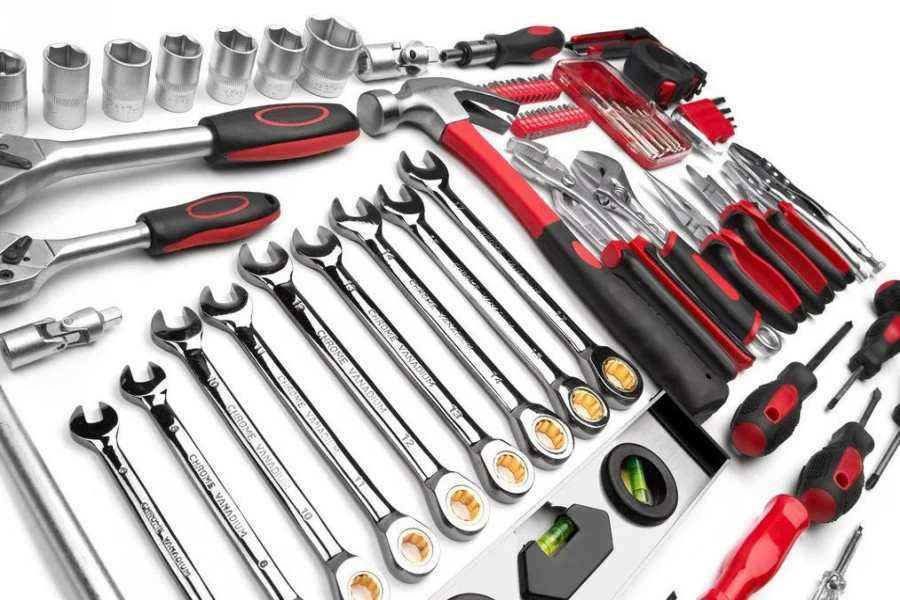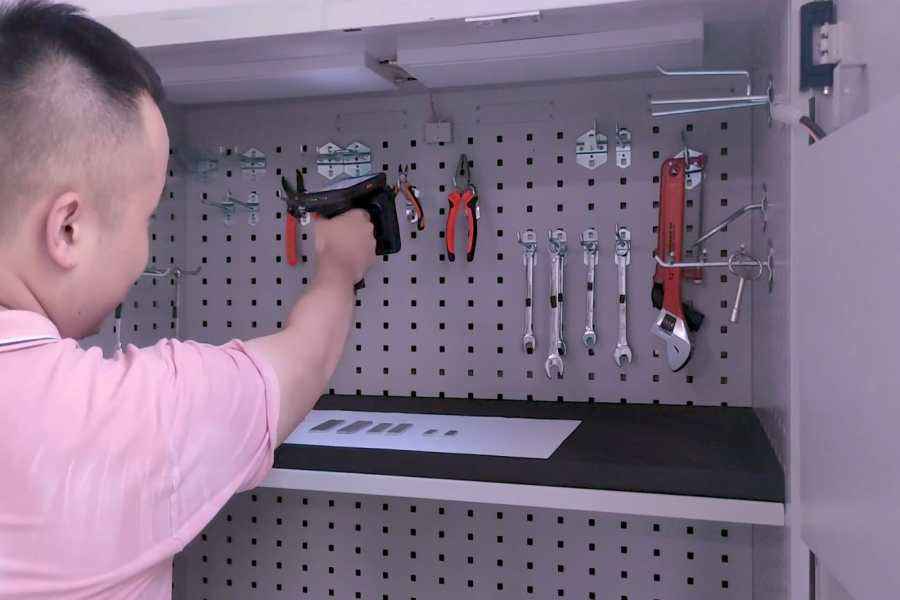Technology Exchange
Introduction to the advantages and operation process of RFID special tags in tool management
How to quickly manage repair tools? What convenience can scientific management bring? I believe that many people will ask these questions. After all, in daily maintenance work, hundreds of tools are often used. They are of various types, materials, complex specifications, and large numbers. It is really troublesome to manage. Therefore, the scientific management of tools is of great significance to unit production, improving labor efficiency, improving maintenance quality, reducing labor intensity, and accelerating liquidity turnover.
At present, the main task of tool management of maintenance units is to supply suitable tools to maintenance teams; to do a good job of classification and numbering of tools; to establish and improve the inventory system of tools; to repair and replace tools that need to be repaired and replaced in a timely manner. However, due to the lack of adequate information technology, it is still in the initial stage of manual management, and there are many tools that have been lost by maintenance units.

By installing RFID anti-metal tool management tags on the tools, the warehouse management of tools can be completed. Using RFID technology can save you management time and improve work efficiency. The basic information of the tool can be displayed on the staff's computer equipment to facilitate statistics and inquiries. Let's take a closer look with RFID special tag manufacturers using Core IoT Technology:
After using the RFID tool management system, what aspects of technology management can be achieved?
1. Tools purchase and storage: First, paste or hang the RFID anti-metal asset management label on the tool before the tool is stored, and enter the tool’s product name, model, specification, origin, brand name, packaging and other basic information, and Divide the tool categories, place the tools in the corresponding position of the warehouse after the entry and classification are completed, and make a record of the location.
2. Tool lending: read the RFID information of the tool to be borrowed through the RFID reader, save the lending time, borrowing department and personnel, borrowing purpose and other related information in the data collector, click the touch screen to confirm, Upload to the system via batch processing or wirelessly.
3. Tool return: Use the RFID reader to read the information in the tool tag and check it with the information retained when loaned out. After confirming that it is correct, click the touch screen to confirm the storage, and place the tool in the corresponding position in the warehouse, and the return procedure is complete.
4. Appraisal of measuring tools: According to relevant regulations, the measuring tools shall be regularly appraised by the designated inspection department. After verification, the verification information is written into the system.
5. Tool scrap: When the tool reaches the designated service life or is damaged and cannot be used anymore, it must be scrapped. After reading the electronic label information of the device through an RFID reader or a handheld terminal, the reason for scrapping, the handler, the approver and other relevant information are entered in the system, and the device is scrapped. The scrapped equipment information will be kept in the scrapped tool file information for inquiries.
6. Tool inventory: enter the inventory status, use the RFID handset to sequentially collect the tool tags on the tool rack, enter and upload to the background, through the RFID tags installed on the tools, the number of each tool can be collected, the background The system then completes the inventory of warehouse tools and generates reports based on the collected quantity data.

Using the RFID tool management system to manage various types of tools can reduce the pressure of personnel management, facilitate inventory, anti-counterfeiting, anti-theft, and easy traceability, and can greatly enhance the competitiveness of tool management related industries. For more RFID anti-metal tags, RFID ceramic anti-metal tags, ABS anti-metal tags, RFID anti-metal tool management tags, RFID asset management tags, RFID special tags, etc., welcome to pay attention to the exchange of core IoT technology.
At present, the main task of tool management of maintenance units is to supply suitable tools to maintenance teams; to do a good job of classification and numbering of tools; to establish and improve the inventory system of tools; to repair and replace tools that need to be repaired and replaced in a timely manner. However, due to the lack of adequate information technology, it is still in the initial stage of manual management, and there are many tools that have been lost by maintenance units.

By installing RFID anti-metal tool management tags on the tools, the warehouse management of tools can be completed. Using RFID technology can save you management time and improve work efficiency. The basic information of the tool can be displayed on the staff's computer equipment to facilitate statistics and inquiries. Let's take a closer look with RFID special tag manufacturers using Core IoT Technology:
After using the RFID tool management system, what aspects of technology management can be achieved?
1. Tools purchase and storage: First, paste or hang the RFID anti-metal asset management label on the tool before the tool is stored, and enter the tool’s product name, model, specification, origin, brand name, packaging and other basic information, and Divide the tool categories, place the tools in the corresponding position of the warehouse after the entry and classification are completed, and make a record of the location.
2. Tool lending: read the RFID information of the tool to be borrowed through the RFID reader, save the lending time, borrowing department and personnel, borrowing purpose and other related information in the data collector, click the touch screen to confirm, Upload to the system via batch processing or wirelessly.
3. Tool return: Use the RFID reader to read the information in the tool tag and check it with the information retained when loaned out. After confirming that it is correct, click the touch screen to confirm the storage, and place the tool in the corresponding position in the warehouse, and the return procedure is complete.
4. Appraisal of measuring tools: According to relevant regulations, the measuring tools shall be regularly appraised by the designated inspection department. After verification, the verification information is written into the system.
5. Tool scrap: When the tool reaches the designated service life or is damaged and cannot be used anymore, it must be scrapped. After reading the electronic label information of the device through an RFID reader or a handheld terminal, the reason for scrapping, the handler, the approver and other relevant information are entered in the system, and the device is scrapped. The scrapped equipment information will be kept in the scrapped tool file information for inquiries.
6. Tool inventory: enter the inventory status, use the RFID handset to sequentially collect the tool tags on the tool rack, enter and upload to the background, through the RFID tags installed on the tools, the number of each tool can be collected, the background The system then completes the inventory of warehouse tools and generates reports based on the collected quantity data.

Using the RFID tool management system to manage various types of tools can reduce the pressure of personnel management, facilitate inventory, anti-counterfeiting, anti-theft, and easy traceability, and can greatly enhance the competitiveness of tool management related industries. For more RFID anti-metal tags, RFID ceramic anti-metal tags, ABS anti-metal tags, RFID anti-metal tool management tags, RFID asset management tags, RFID special tags, etc., welcome to pay attention to the exchange of core IoT technology.
上一篇:What are the common functions of RFID book file management system? 下一篇:What are the advantages of NFC tags/cards in social media sharing applications?
Related news
- What are the applications of RF2021-11-10
- Do you know read-only RFID tags2022-05-16
- Analysis on the application and2021-10-29
- Analysis on the precautions for2021-08-07
- Do you know about RFID anti-cou2022-01-20
News
contact us
contact information
E-mail:
Address:Building 2, Longhua Semiconductor Industrial Park, No. 1310 Guangguan Road, Guanlan Street, Longhua District, Shenzhen
 Scan code and wechat
Scan code and wechat